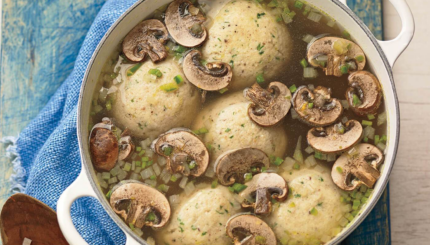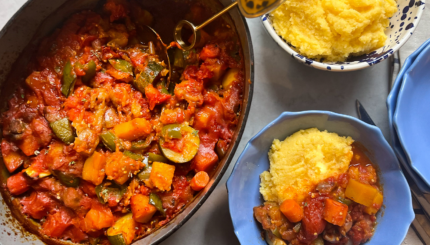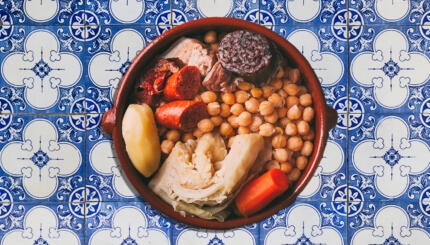Aside from the love it or leave it relationship with Passover candies, rice and beans are often the most contentious Passover food. Most Jews with roots in Spain, North Africa, and the Middle East have always been permitted to eat rice and beans at Passover, while Jews with roots in Central and Eastern Europe have generally not. But today that is all changing. American Jews are less aware of historical distinctions and more open to exploring the global nature of Jewish traditions.
Rice and beans belong to a broader category of legumes and other foodstuffs like corn and peanuts the rabbis called kitniyot. Unlike wheat, barley, spelt, oats and rye, which are expressly forbidden for all Jews at Passover, kitniyot occupy a gray area, with some Jews abstaining and others indulging.
But is it okay for one group of Jews to borrow traditions from another? Or is it cultural appropriation? In other words, does adapting kitniyot celebrate Jewish diversity or is it insulting or insensitive to incorporate Jewish customs or traditions that come from a Jewish community from which you don’t originate?
In her 2018 Passover video, 8 days of Sephardic, Sarah Aroeste, a Greek Jewish singer and educator, made light of the trend to “be Sephardic” for Passover. For Elad Nehorai, an Orthodox activist for diversity, Sephardi identity is about so much more than convenience during Passover. Having grown up in a non-observant household, Nehorai become observant as an adult. He sees kitniyot as part of a broader package of Sephardic culture and customs, some of which are more lenient and some of which are more strict than Ashkenazi practice. He prefers that people stick with one system, or at least have broader philosophical or cultural connections.
Aroeste acknowledges the breadth of Sephardi culture and practice, saying, “Of course we are much more than rice and beans. But Sephardic food rocks, and it opens up questions about where it came from.” Like her music, she sees food as “a way to open up the conversation about Sephardic culture and history.”
Rabbi Devin Villarreal sees the sharing of foodways as “a good thing in that it does help people expand what they think of as Jewish. At the same time, if notions of diversity stop at food or melodies or clothing, there is a great danger. It is critical that people understand that these external manifestations are rooted in diverse experiences, ways of encountering the world and ways of being Jewish. It is only when something like food is a gateway to those deeper understandings that it really serves as a vehicle for diversity.”
Nehorai concedes that the culinary blending is inevitable. His own parents came to the United States from Israel. His mother’s roots were Lebanese and Persian, but her cooking draws from the mix of cultures that came together in the Israel of her youth. At Passover, she makes matzo ball soup as well as meat with rice and Middle Eastern spices.
Rabbi Juan Mejia sees the role of Israel as well as that of modern communication in this changing landscape. “Before the 13th century, Ashkenazim used to eat kitniyot through proximity with Sepharadim. In modern times, they have been reacquainted with perfectly legitimate and authentic Jewish choices that predate the Ashkenazi-Sephardi divide.”
Rabbi Joshua Heller is an Ashkenazi member of the Committee on Jewish Law and Standards of the Conservative movement that voted to permit Ashkenazi Jews to eat kitniyot. Heller sees this decision as “part of an increasing appreciation among Ashkenazi Jews that our traditions are not the only ones or even the ‘default.’” But Heller notes that as Jews adopt customs from other communities, they run “the risk of not showing respect to the context from which those customs were borrowed.”
That concern is shared by Tamar Zaken. A Sephardi educator, Zaken has no qualms about culinary mixing but feels strongly that “there does need to be more cross-edah (Jewish ethnic sub-group) learning that has nothing to do with cooking. When you think Sephardi you always think food, and I am always trying to move away from that.” Zaken makes it a priority to teach Jewish texts written by Sephardi rabbis that are often overlooked in American Jewish settings.
Not everyone is comfortable borrowing customs across Sephardi and Ashkenazi lines. Mejia grew up in Colombia, where rice and beans are culinary staples. When he converted to Judaism, he like other converts had to choose what approach to follow and originally he chose Sephardi. But today, his Passover practice is dictated by the customs of his wife’s family who are faithful to the Ashkenazi prohibition against kitniyot.
But there is clear agreement that if you do choose to break with your family tradition and add kitniyot to your Passover diet, make sure to give it some context. Learn about the communities who ate rice and lentils, delve into the history of the Jews of Greece, Yemen or Iraq. At your Passover Seder, bring in commentaries by Persian or Spanish rabbis or Passover stories from Ethiopia or Uganda. And if food is your main form of Jewish expression, take a page from Villarreal, who recommends learning more through food. A good place to start? According to Rabbi Villarreal, “Jennifer Felicia Abadi’s “Too Good to Passover” which has recipes from all over the Sephardic, North African and Middle Eastern world, and introduces each one with an interview with the person(s) who provided the recipe in which they share their family’s stories and experiences. In my mind, this is a wonderful model of a deep understanding of diversity.”



